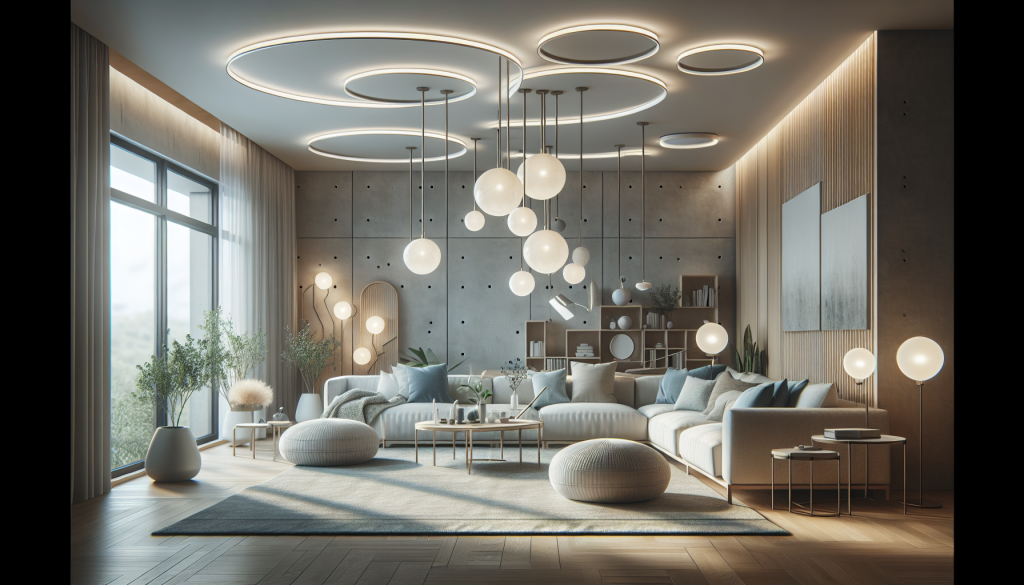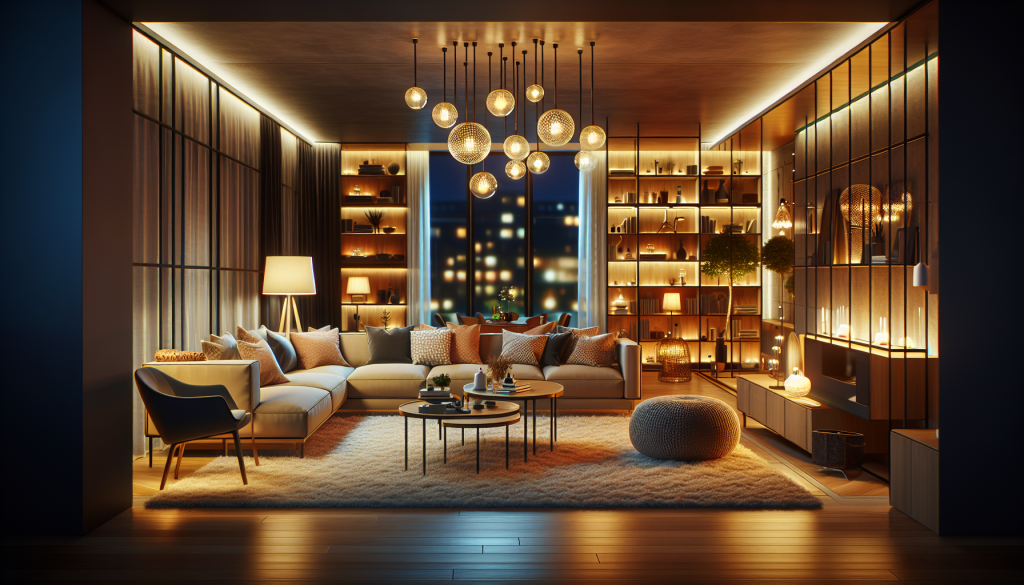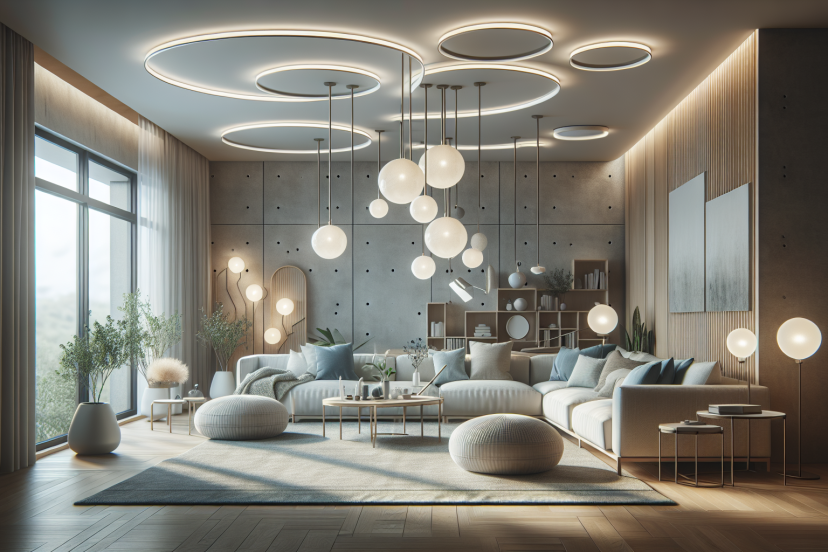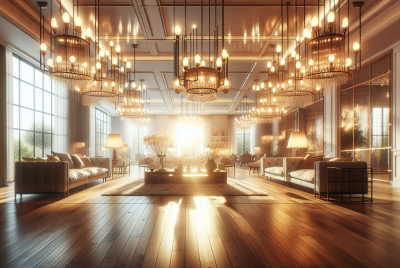Top Tips For Upgrading Your Home’s Interior Lighting
Are you tired of dull and outdated lighting fixtures in your home? Look no further! In this article, discover the top tips for upgrading your home’s interior lighting. From choosing the perfect fixtures to understanding the importance of layering, we’ll guide you through the process of transforming your living space into a well-lit and inviting haven. Whether you’re aiming for a cozy ambiance or a sleek modern look, these tips are sure to help you achieve the perfect lighting for any room in your home. So, say goodbye to dimly lit corners and hello to a brighter, more stylish space. Let’s get started! When it comes to enhancing the overall ambiance and functionality of your home, upgrading your interior lighting is an excellent place to start. The right lighting can transform a dull and drab space into a warm and inviting sanctuary. Whether you’re renovating your entire home or just looking to make a few changes, these top tips will guide you through the process of upgrading your home’s interior lighting.

1. Assess Your Lighting Needs
Before diving into the world of lighting fixtures and bulbs, it’s essential to assess your lighting needs. Consider the function of each room in your home. Does your living room serve as a gathering space for family and friends? Is your kitchen primarily used for cooking and meal preparation? Understanding each room’s purpose will help you determine the appropriate lighting.
Additionally, evaluate the natural light that enters each room. Take note of the amount of sunlight that filters through the windows at different times of the day. This will help you identify areas that may require more artificial lighting.
Lastly, think about the desired ambiance you want to create in each space. Do you prefer a cozy and intimate atmosphere, or do you want a bright and energetic vibe? Knowing the ambiance you want to achieve will guide your lighting decisions.
2. Choose the Right Type of Lighting
Now that you have assessed your lighting needs, it’s time to choose the right type of lighting for each room in your home. There are three main types of lighting to consider – general or ambient lighting, task lighting, and accent or decorative lighting.
General or ambient lighting provides overall illumination to a room. It is the primary source of light and should be bright enough to ensure visibility throughout the space. Examples of ambient lighting include ceiling-mounted fixtures, chandeliers, or recessed lighting.
Task lighting, as the name suggests, is focused on specific tasks or activities. It is designed to provide direct and shadow-free illumination, making it ideal for activities such as reading, cooking, or working. Task lighting options include desk lamps, under-cabinet lighting, or pendant lights placed above a kitchen island or dining table.
Accent or decorative lighting adds a touch of flair and enhances the aesthetics of a room. It is used to highlight architectural features, artwork, or other focal points in your home. Wall sconces, track lighting, or picture lights are commonly used for accent lighting.
3. Select Suitable Light Fixtures
Now that you understand the different types of lighting, it’s time to select suitable light fixtures for your home. Consider the style and theme of your home when choosing fixtures. Opt for fixtures that complement the room’s design and contribute to the overall aesthetic.
Ensure proper scaling of fixtures by taking into account the size of the room and the height of the ceilings. A large chandelier may overpower a small dining area, while a tiny pendant light may get lost in a grand foyer.
When selecting light fixtures, it’s also essential to consider energy efficiency. Opt for fixtures that are compatible with energy-efficient bulbs, such as LED lights. This will not only help reduce your energy consumption but also lower your electricity bills in the long run.
4. Incorporate Natural Light
In addition to artificial lighting, incorporating natural light into your home is key to creating a bright and inviting atmosphere. Maximize the use of natural light by strategically placing windows, skylights, and glass doors in areas that receive ample sunlight.
You can further enhance the impact of natural light by choosing light-colored curtains or blinds. These will allow light to pass through while still providing privacy when needed. Light-colored window treatments also contribute to a more open and airy feel in the room.

5. Utilize Layered Lighting
To achieve a well-lit and visually appealing space, it’s important to utilize layered lighting. Layered lighting involves combining different types of lighting to create depth and dimension in a room.
Incorporate a mix of overhead lights, lamps, and wall sconces to provide a combination of ambient, task, and accent lighting. This allows you to customize the lighting based on different activities and moods. For example, you can have the overhead lights on for general lighting, a desk lamp for task lighting while working, and a wall sconce for accent lighting to highlight a piece of artwork.
By layering lighting, you can create a more dynamic and visually interesting space that suits your specific needs.
6. Install Dimmer Switches
Enhance flexibility and control over your lighting by installing dimmer switches. Dimmer switches allow you to adjust the light intensity according to the activities taking place in a room. Whether you’re hosting a dinner party or enjoying a cozy movie night, dimmer switches allow you to set the mood accordingly.
Dimming the lights also helps conserve energy, as you can lower the brightness when full illumination is not required. This not only saves money on your electricity bills but also extends the lifespan of your light bulbs.
7. Use LED Lighting
When it comes to energy efficiency and longevity, LED lighting is the way to go. Switching to energy-efficient LED bulbs can significantly reduce your energy consumption and lower your carbon footprint.
LED bulbs last much longer than traditional incandescent bulbs, saving you money on frequent replacements. They also produce less heat, making them safer to use and reducing the risk of accidental burns or fires.
When choosing LED bulbs, be mindful of the color temperature. The color temperature refers to the perceived warmth or coolness of the light. Opt for warm white (2700K-3000K) for a cozy and intimate feel, cool white (3500K-4100K) for a crisp and vibrant atmosphere, or daylight white (5000K-6500K) for a bright and energizing ambiance.
8. Consider Color Temperature
Understanding different color temperatures is crucial in creating the right lighting ambiance in your home. Warm white lighting, ranging from 2700K to 3000K, creates a cozy and inviting atmosphere, perfect for living rooms, bedrooms, and dining areas.
Cool white lighting, falling between 3500K and 4100K, provides a bright and energizing illumination. This color temperature is well-suited for bathrooms, kitchens, and workspaces, as it promotes focus and productivity.
Daylight white lighting, which ranges from 5000K to 6500K, mimics natural daylight and creates a crisp and vibrant atmosphere. This color temperature is ideal for areas where accuracy and visibility are essential, such as garages or artist studios.
By understanding the different color temperatures, you can fine-tune your lighting choices to suit the purpose and ambiance of each room in your home.
9. Install Lighting Controls
If you’re looking for ultimate convenience and control in your lighting system, consider investing in smart lighting controls. Smart lighting systems allow you to set schedules and automate the lighting in your home.
You can program your lights to turn on and off at specific times, creating a sense of occupancy even when you’re away. Additionally, many smart lighting systems offer remote control through mobile apps, allowing you to adjust lighting settings from anywhere.
Lighting controls not only enhance the functionality of your lighting system but also contribute to energy efficiency by eliminating the chance of lights being left on when not needed.
10. Seek Professional Assistance
While upgrading your home’s interior lighting can be a fulfilling DIY project, seeking professional assistance can ensure optimal results. Consulting an interior lighting designer can provide valuable insights and expertise in fixture selection and placement.
An interior lighting designer will consider the unique requirements and aesthetics of your home, guiding you towards the most suitable lighting solutions. They will also ensure proper installation and adherence to safety regulations, giving you peace of mind.
Professional assistance can save you time, prevent costly mistakes, and help you achieve the desired lighting transformation for your home.
In conclusion, upgrading your home’s interior lighting is a fantastic way to add both functionality and style to your living spaces. Assess your lighting needs, choose the right type of lighting, select suitable fixtures, incorporate natural light, utilize layered lighting, install dimmer switches, switch to LED lighting, consider color temperature, install lighting controls, and seek professional assistance. By following these top tips, you’ll create a well-lit and inviting home environment that perfectly suits your needs and preferences.




